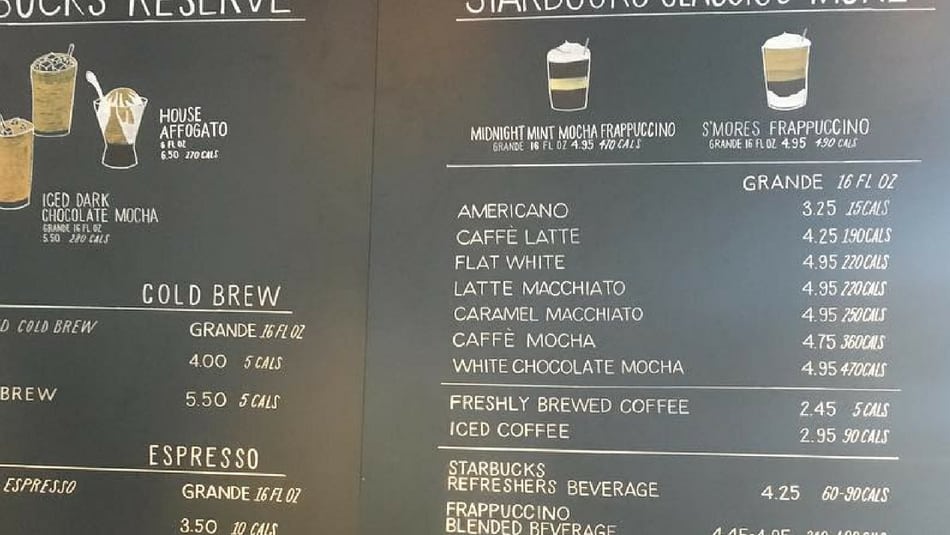Where did calorie menu labeling start?
It started in 2008 in New York City. The city required restaurants with 15 or more locations to include calorie counts on their menu items. In 2009, California took a similar position. In 2010, the Affordable Care Act ruled that chains with more than 20 locations nationally were required to list calorie information. It didn’t go into effect until 2018.
What is the point of calorie menu labeling?
The idea, according to the FDA, was that consumers would make more informed health decisions. Considering their data showed that Americans eat & drink about 1/3 of their daily calories away from home, the idea was to target that 1/3 considering nutritionally those meals were made up of more saturated fat, calories and sodium than meals prepared at home.
Such a simple solution to a very complex problem.
Calorie menu labeling started to combat obesity. Obesity is considered a major public health crisis but the issue is quite nuanced and not often treated as such. The idea of “calories in calories out” as a solution to a very complex problem is almost laughable.

What is wrong with calorie menu labeling?
Here are 10 reasons calorie menu labeling does not do anything to control weight:
1. Weight loss is not that simple. You know you need to eat less than you expend, but HOW. Saying “eat something with less calories” is unhelpful. Most people understand what a well-rounded diet looks like but they have barriers in the way of getting there.
2. There is no education in conjunction. Just slapping a number next to a food tells us what? It’s assuming people know where the calories of that food fall in their daily range of calories. It’s very possible that someone would look at a combo meal at McDonald’s that has 1,100 calories and have no idea if that’s too many or too little for a single meal.
3. Furthermore, many, many people have no clue how many calories they eat regularly or should be eating so saying something is 600 calories means nothing. It does not allow them to make an informed decision and teaches them nothing about how much they need personally.
4. There is no evidence calorie menu labeling has worked to control obesity. People order what they like, and as noted above, don’t take calorie amounts into consideration. Proponents of the law say it gives consumers “information” to help them make an informed decision, but the only information being given is a number not many people know how to put into context. It’s been studied that there is no effect from simple calorie labeling.
5. When restaurants introduce newer menu items, the items are reduced by about 100 calories. This is pretty insignificant. Considering we are talking about 900-1400 calorie meals (or higher), cutting 100 calories from a meal 1-2 times a week is pretty insignificant in the scheme of the entire obesity issue in the country. It’s also argued that since people are choosing a lower calorie item, they may get an extra side or a larger soda to go with their meal they may not have otherwise gotten.
6. Fast food restaurants (like a McDonald’s) with calorie labels might be the only places some low-income people can eat and sometimes it’s their only meal of the day. No one is looking at the calories. The reality is that many of the fast-food chains bound by this law are placed in low-income areas and people frequent these restaurants due to convenience and budget. They may be suffering from health concerns more related to environmental and socioeconomic issues, and calories don’t mean anything to them.
7. Like all diet behavior, it might work initially but the thoughtfulness in which people make choices wears off after a few months. The initial few times calories are brought to the attention of the consumer, they might think less is better and pay closer attention. But like any other diet behavior, it’s short-lived. We go back to our old habits and preferences within a few months.
8. It can reinforce the idea that “good” foods have lower calorie amounts and “bad” foods have higher calorie amounts and make you feel guilty for your choice if you want something higher-calorie. That’s really the only information we are getting from the calorie labels. You don’t know anything about the composition of the meal or how the calories are distributed.
9. Calorie counting is a very triggering behavior for many people, not to mention the judgement from others when they can see how many calories are in what you order. For those with a history of eating disorders or certain disordered eating behaviors, mention of calories can cause major anxiety. People are also subjugated to judgement from others if they order a higher-calorie item.
10. WAY more plays into our health than calories. People might want to argue this, but calorie counting alone is useless. The “what” is useless without the “how.” Weight and obesity is a very multi-faceted issue and it would be more helpful if actual behaviors were addressed.
What do you think? Does calorie menu labeling trigger you? Make you choose something different than what you wanted?
